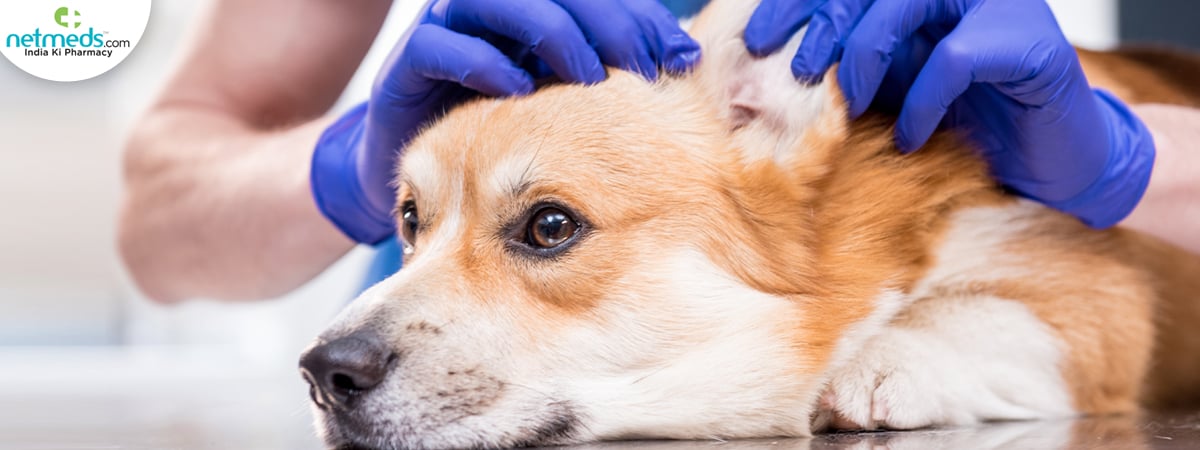Just like humans, pets experience pain, but unlike us, they cannot tell us when something hurts. Whether it is a subtle limp, a change in appetite, or unusual behaviour, animals often hide discomfort as an instinct. Your pet depends on you to notice when something feels wrong. Recognizing these signs early is crucial for preventing minor issues from becoming serious health problems. By staying observant and proactive, you can ensure they live a happy, pain-free life. In this pet care guide, we will explore common physical and behavioural signs that indicate your pet may be in pain, and the steps to ensure your furry friend gets the best possible care.
Also Read: Telehealth For Pets: Can Virtual Vet Visits Replace In-Person Care? Pros And Cons
How To Identify If Your Pet Is in Pain?

If you notice your pet’s normal behaviour, body language, and daily routines are different on a certain day, you can help you spot when something isn’t right. Check out the following signs:
Behaviour Changes
A sudden change in your pet’s usual behaviour is the first red flag. They might become unusually quiet, withdrawn, clingy, or aggressive. A normally playful pet who suddenly avoids attention or hides may be struggling with discomfort. Excessive sleepiness, restlessness, or avoidance of interaction can all be early signs, too.
Movement Issues
If your pet starts moving differently, it is time to pay attention. Limping, stiffness, reluctance to climb stairs, or hesitating before jumping onto furniture can signal joint, muscle, or bone pain. Even subtle changes in walking patterns or posture can reveal discomfort. Regularly observing your pet’s mobility helps catch problems before they worsen.
Appetite Loss
A noticeable drop in appetite or refusal to eat and drink can indicate pain or illness. Track your pet’s food and water intake daily. If your pet skips meals or drinks less water for more than twenty-four hours, consult a veterinarian immediately.
Vocalization
Unusual noises can be your pet’s way of saying something hurts. Whining, growling, excessive meowing, or even abnormal silence are potential signs of distress. Some pets become more vocal, while others go quiet when in pain. Observe these changes, as they may provide important insight into your pet’s physical or emotional state.
Body Language
A pet’s body language can reveal more than words ever could. Watch for restlessness, shaking, excessive panting, or licking one area repeatedly. A hunched back, flattened ears, or narrowed eyes can all be pain indicators. Subtle expressions and posture changes should never be ignored, as they often signal hidden discomfort or injury.

5 Steps To Help A Pet In Pain
When your pet is in pain, providing the right care quickly can make a huge difference in their recovery. Following simple but essential steps can help reduce stress, prevent further injury, and improve your pet’s overall well-being:
Stay Calm
Your pet looks to you for comfort. If you panic, they may become more anxious. Speak softly, move slowly, and create a calm environment. A gentle, reassuring presence helps reduce their stress and allows you to safely assess the situation without making your pet more fearful or defensive.
Check For Injuries
Carefully examine your pet for visible injuries, swelling, or heat around specific areas. Gently run your hands over their body and note any sensitive spots. Avoid pressing or moving the affected area too much. Identifying where the pain originates can help your vet determine the right treatment quickly.
Limit Daily Activity
Rest is crucial when your pet is hurting. Keep them in a quiet, comfortable space away from stairs or other pets. Avoid playtime or walks until the cause of pain is known. Restricting movement helps prevent further injury and supports the healing process.
Consult A Vet
Never use human medications, not even in serious trouble. Contact your veterinarian as soon as possible for a professional evaluation. The vet can perform diagnostic tests and recommend pain relief options that are safe and effective for your pet’s species, breed, and condition. Early consultation prevents complications and ensures faster recovery.
Follow Care Instructions
Once diagnosed, follow your vet’s treatment plan carefully. Administer prescribed medications on time, follow dietary changes, and monitor your pet’s progress. Report any side effects or changes in behaviour immediately. Consistency and patience are key to helping your pet heal comfortably and completely.
Also Read: Pet Health Chart: Keep Track Of These Parameters For Their Well-Being And Longevity
Precautions To Keep Your Pet Pain-Free
Preventing pain is always better than treating it. If you ever suspect your pet is in pain, trust your instincts and contact your veterinarian because when it comes to their health, early care makes all the difference. Follow these tips as they may come in handy during crucial times:
Take Them For Regular Checkups: Schedule yearly wellness exams to catch issues early. Skipping them can worsen problems.
Give A Balanced Diet: Feed age-appropriate, nutrient-rich food for strong joints and immunity in your four-legged.
Make Your Pet Exercise Smartly: Maintain regular activity without overexertion. Take your dog for a daily walk.
Prevent Injuries: Use pet-safe spaces and avoid slippery floors. Fewer injuries mean a happy pet.
Monitor Their Weight: Obesity increases pressure on joints and causes long-term pain. Keep your furry buddy’s weight in check.
(This content is reviewed by Kalyani Krishna, Chief Content Editor)
Author Profile: Preeti Sharma
Preeti Sharma has a Master's in Electronic Media and Mass Communication and certification in short-term writing from Florida. With close to a decade of experience, she specializes in crafting engaging blogs on beauty, veterinary care, and healthy cooking. Preeti is proficient in video editing tools and produces captivating and informative content across multiple platforms.
References:
Pet ownership and human health: a brief review of evidence and issues
June McNicholas, psychologist, Andrew Gilbey, lecturer, Ann Rennie, general practitioner, and Sam Ahmedzai.
https://www.ncbi.nlm.nih.gov/pmc/articles/PMC1289326/
https://international-animalhealth.com/
https://www.vet.cornell.edu/departments-centers-and-institutes/cornell-feline-health-center/health-information/feline-health-topics



 Previous
Previous